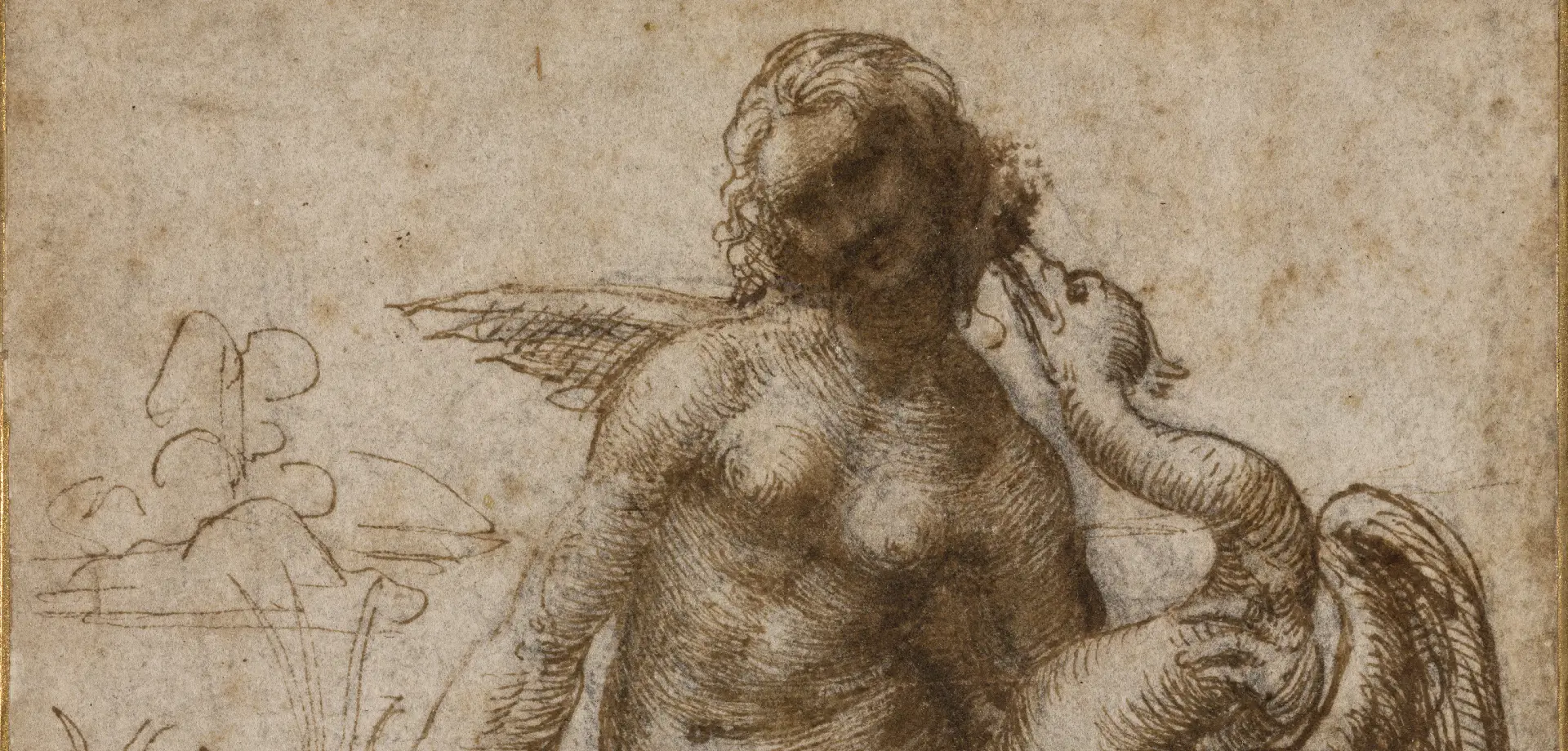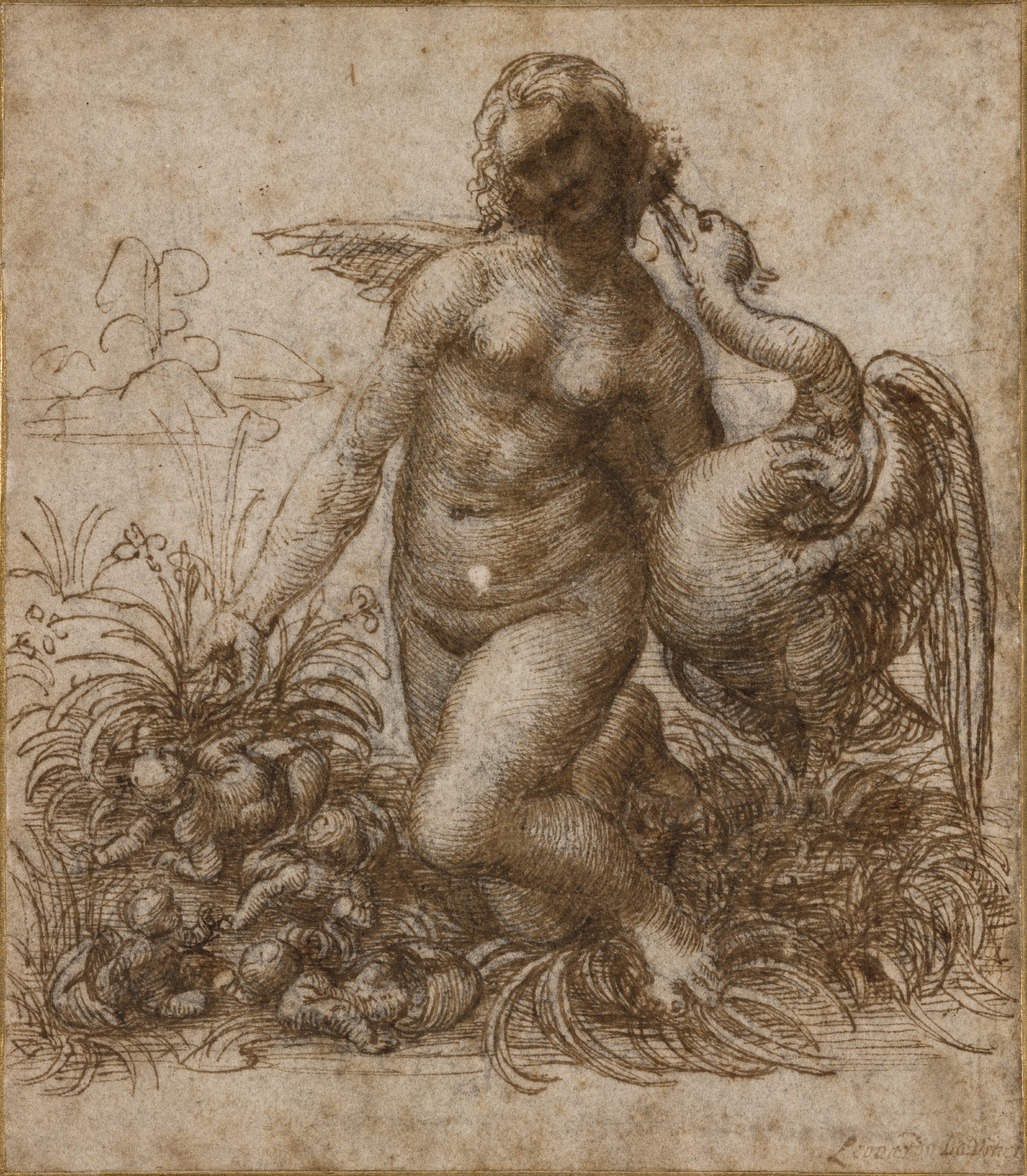
Leonardo is one of the best-known artists from the period known as the Italian Renaissance – a term used to describe the culture, art and politics of Italy during the 15th and 16th centuries. He’s widely regarded as the ultimate ‘Renaissance Man’; that is to say, he had skills that ranged across multiple subjects including art, science, engineering and music.
Leonardo filled notebooks with drawings and writing. These notebooks are an insight into the vast range of subjects he found interesting and, in some ways, into the working of his mind. Like other artists who recorded their thoughts in letters and notes, such as Vincent van Gogh, we sometimes feel we know Leonardo well because he left behind these detailed accounts of his inquisitive nature.
Leda and the Swan is an example of Leonardo testing his materials and his response to a subject from classical mythology. He’s also working out an idea which he then translated into paint (sadly the finished painting no longer exists). This isn’t always the case with the vast selection of the annotated sketches and ideas today exhibited as his ‘drawings’.
Let’s think about the subject of this drawing.
A completely naked woman is caught in an embrace with a swan; she caresses the swan’s long curved neck as it appears to be nestling into her hair or ear with its beak. If a swan could whisper we might imagine it doing so here. Its outstretched wing reaches around the woman’s back and the tip appears behind her shoulder. At first glance it might look as if it is the woman’s wing. Curiously, the woman’s pose is very like that of the swan.
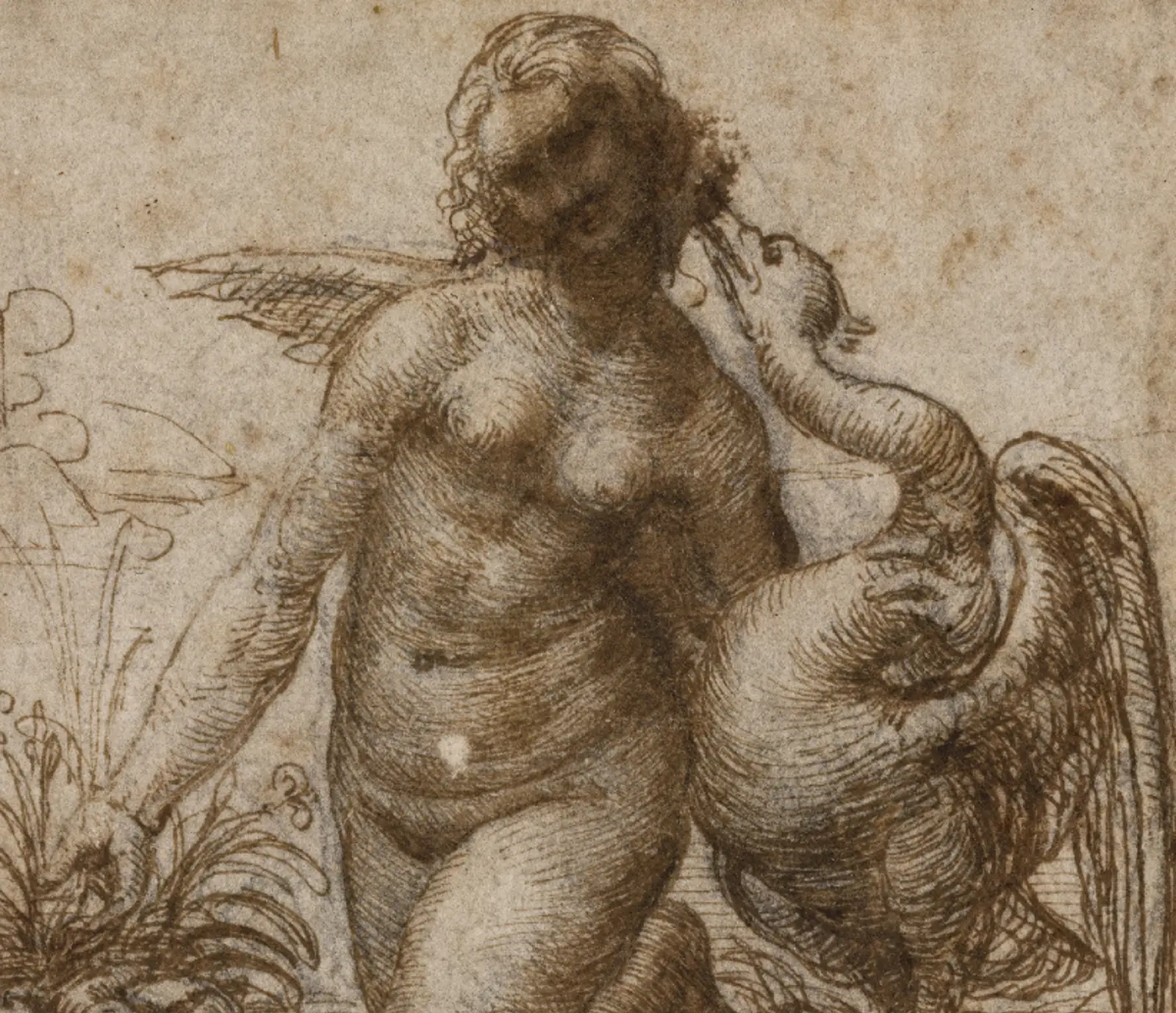
Now take a look at this detail of the woman’s hand (top left) and foot (middle bottom right). Do you notice anything about them?
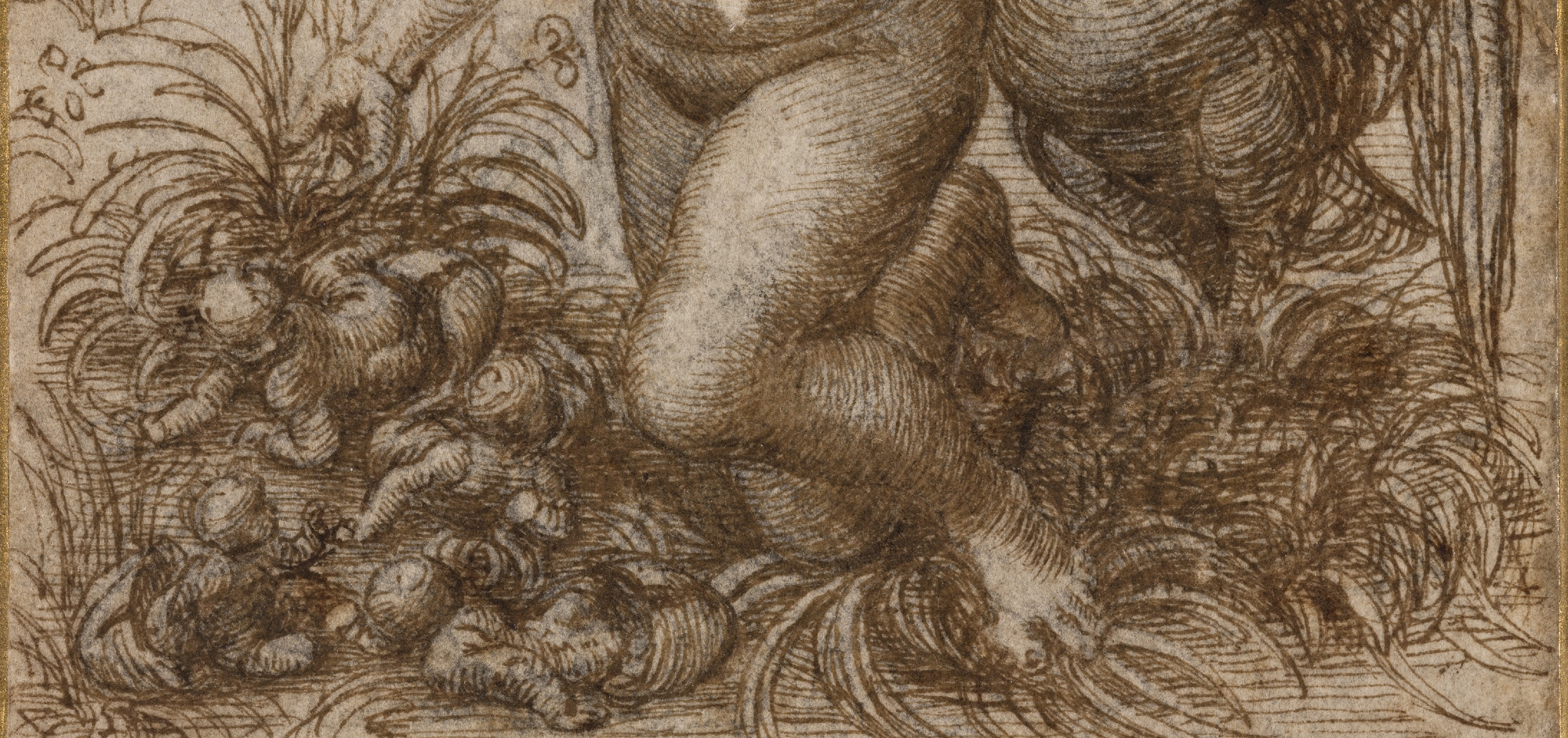
It is hard to tell where the contours of the hand and foot stop and the plants begin. Forms merge and blend - bird and human, human and plant. Now look closely at the bottom left of the drawing where a mass of straight, curved and hatched lines combine to reveal new life.
Birds lay eggs, humans give birth. Here, baby humans hatch from eggs. The style of drawing suits the subject well. By blending the forms of Leda with the surrounding botanical studies, Leonardo combines his fascination with nature and classical myth and in particular a story linked to fertility and the cyclical power of nature.
Nowadays, this might not be a subject we can easily identify, however, when Leonardo was alive, this story was well known. Jupiter, King of the Gods and therefore immortal, often disguised himself in order to seduce anyone he took a fancy to. Here, disguised as a swan, he seduces Leda, who was human, not divine.
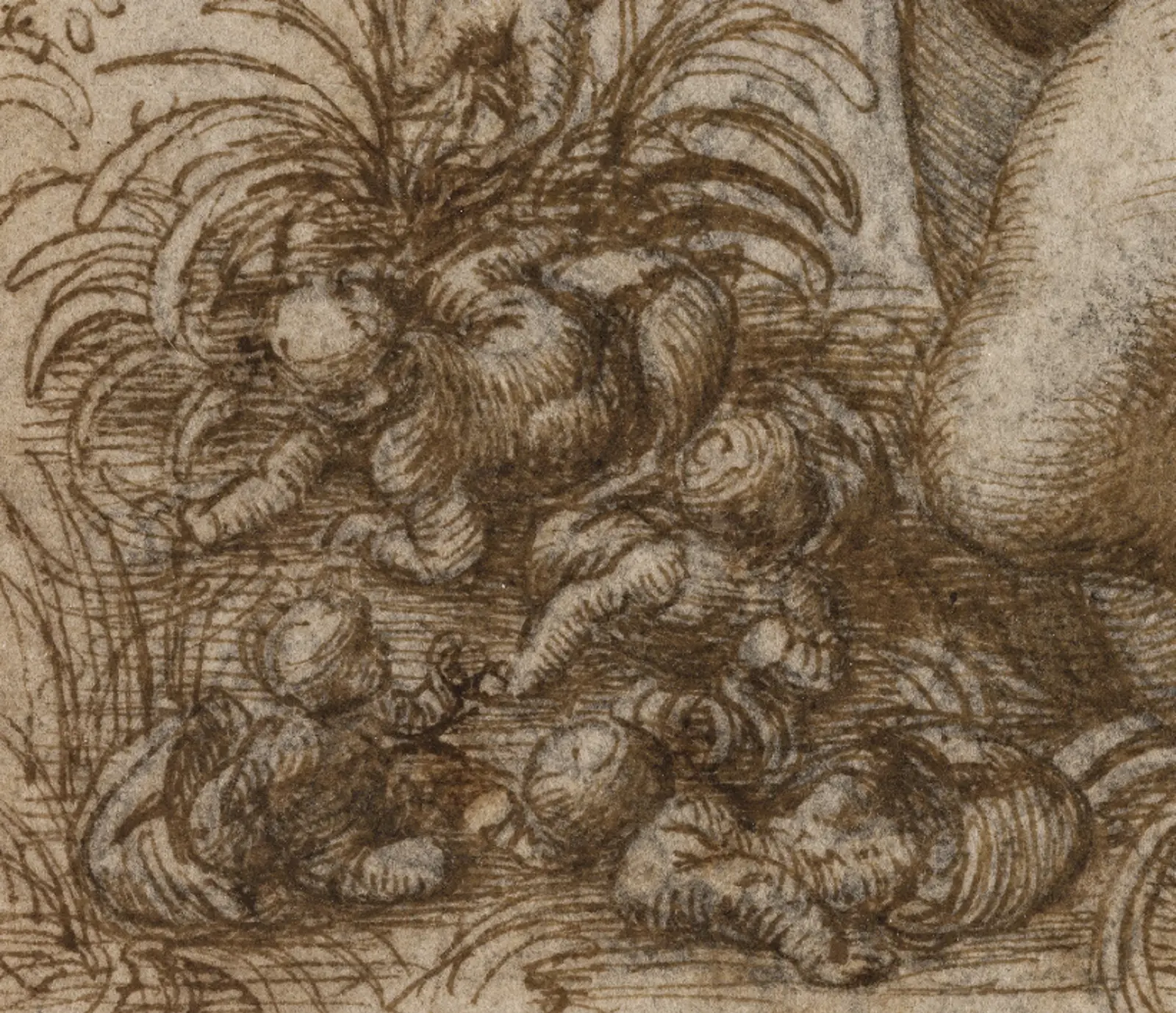
The babies hatching from the eggs to which Leda gestures are her children. Most accepted versions of the story describe Pollux and Helen hatching from one egg, and Castor and Clytemnestra from the other. The storyline suggests that Jupiter was the father of two of the babies and that Leda’s husband, Tyndareus, was the father of the other two. Castor and Pollux are better known as Gemini (meaning twins, although technically they were not). Clytemnestra and Helen were Spartan princesses who married kings and were both implicated in one way or another in the Trojan War.
Now look at the detail of Leda and the Swan again.
It feels as if we have intruded upon an intimate moment, so why are there babies already emerging?
Leonardo has collapsed the narrative sequence into one scene - this was a device in common use at the time. It can make it hard for us to work out what the sequence of events is, but this would not have been confusing for Leonardo’s intended audience.

Leonardo and his contemporaries had an interest in the myths and legends of the ancient world, however, it is possible that he was motivated to work up this idea after seeing real swans. He was an artist as much inspired by the natural world around him as that of the remote classical past.
Now that you are more familiar with the details in this drawing, let’s move on to Leonardo’s drawing materials.
For this drawing Leonardo da Vinci has used pen, wash and black chalk or charcoal – materials used to achieve different effects.
Can you briefly describe the different effects achieved in these three media? Use this detail of Leonardo’s Leda and the Swan if it helps.
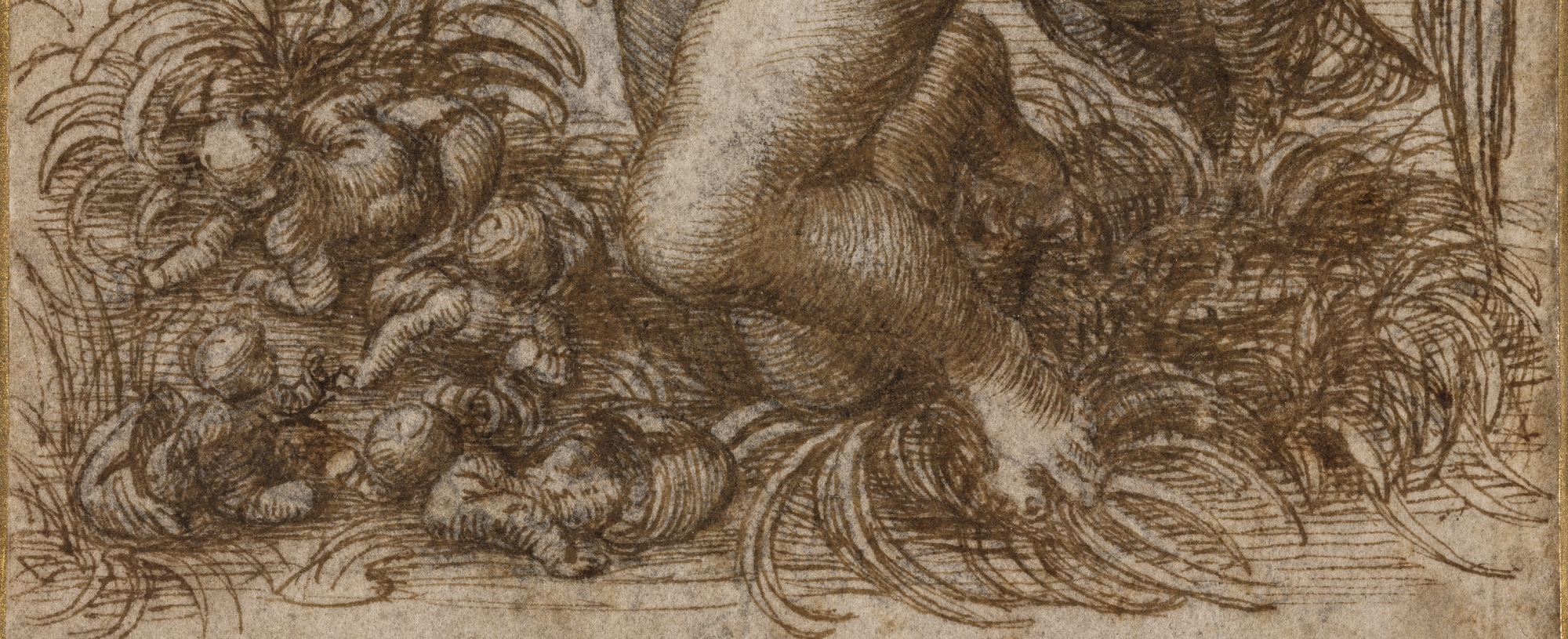
Pen
The type of pen that Leonardo used was quite different to a modern one! Leonardo cut his own pens from goose feathers. Goose feathers are strong and flexible and were in use as pens until the 19th century. The quill of a feather is hollow. Ink was made by combining tannic acid, sourced from oak galls with iron salts. The preparation was worth it as the liquid ink enabled Leonardo to experiment freely with line and mark-making (not so easy to do using metalpoint).
Take a look at this detail.
Moving from top to bottom, try to ignore what Leonardo is drawing and concentrate on how he has rendered:
The three dimensional human form
Using pen and ink made these effects possible.
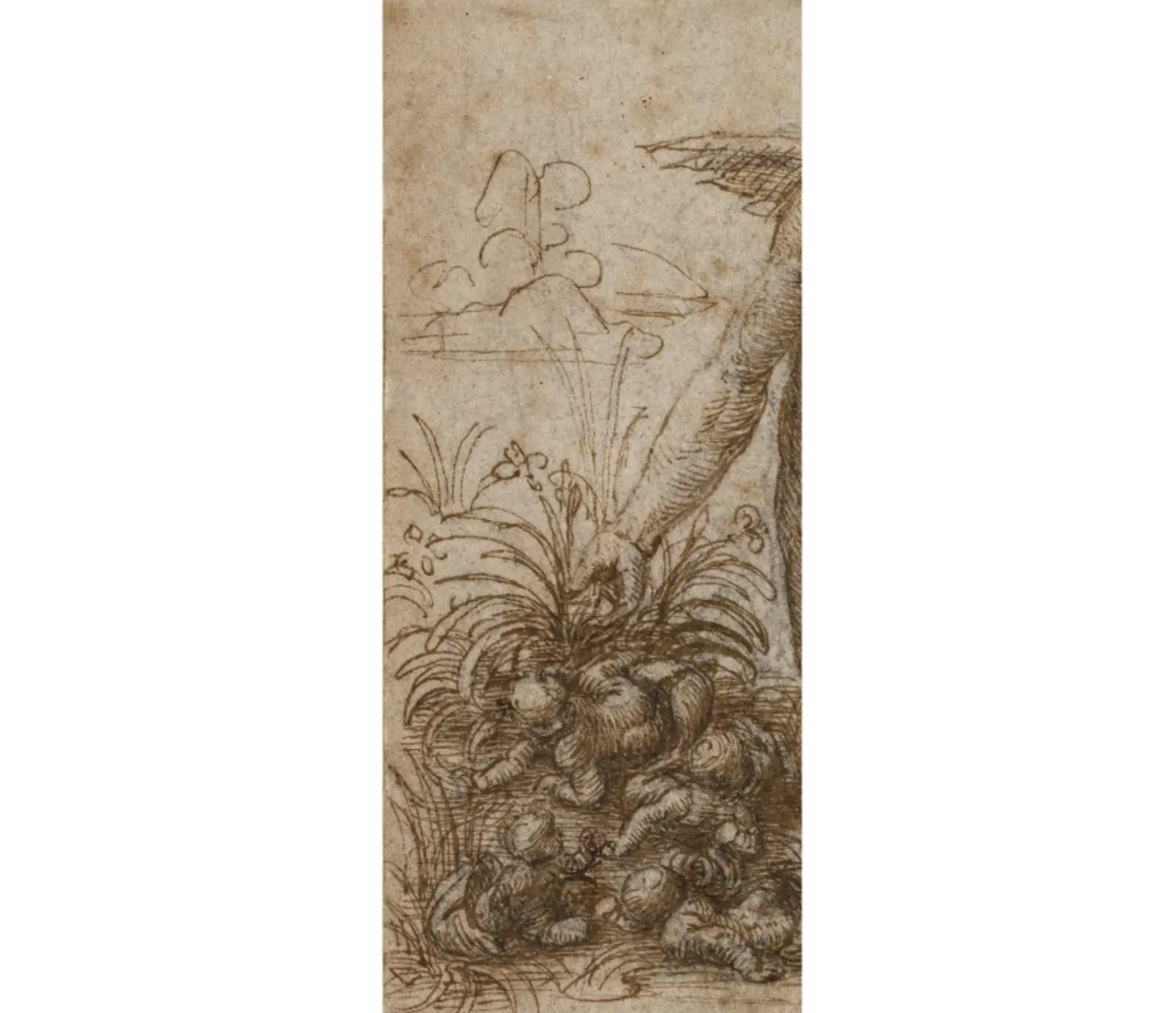
Wash
Look at this detail of Leda.
Leonardo has applied washes of transparent colour with a brush, achieving effects in strong contrast to those achieved using pen and ink. The application of transparent wash has enabled him to soften the female form, defining her curves and modelling her body around the neck, breasts, waist, hips and thighs. Immediately to the left of Leda’s knees, Leonardo has used wash to plunge us into dense foliage, suggesting contrasts of light and shadow.
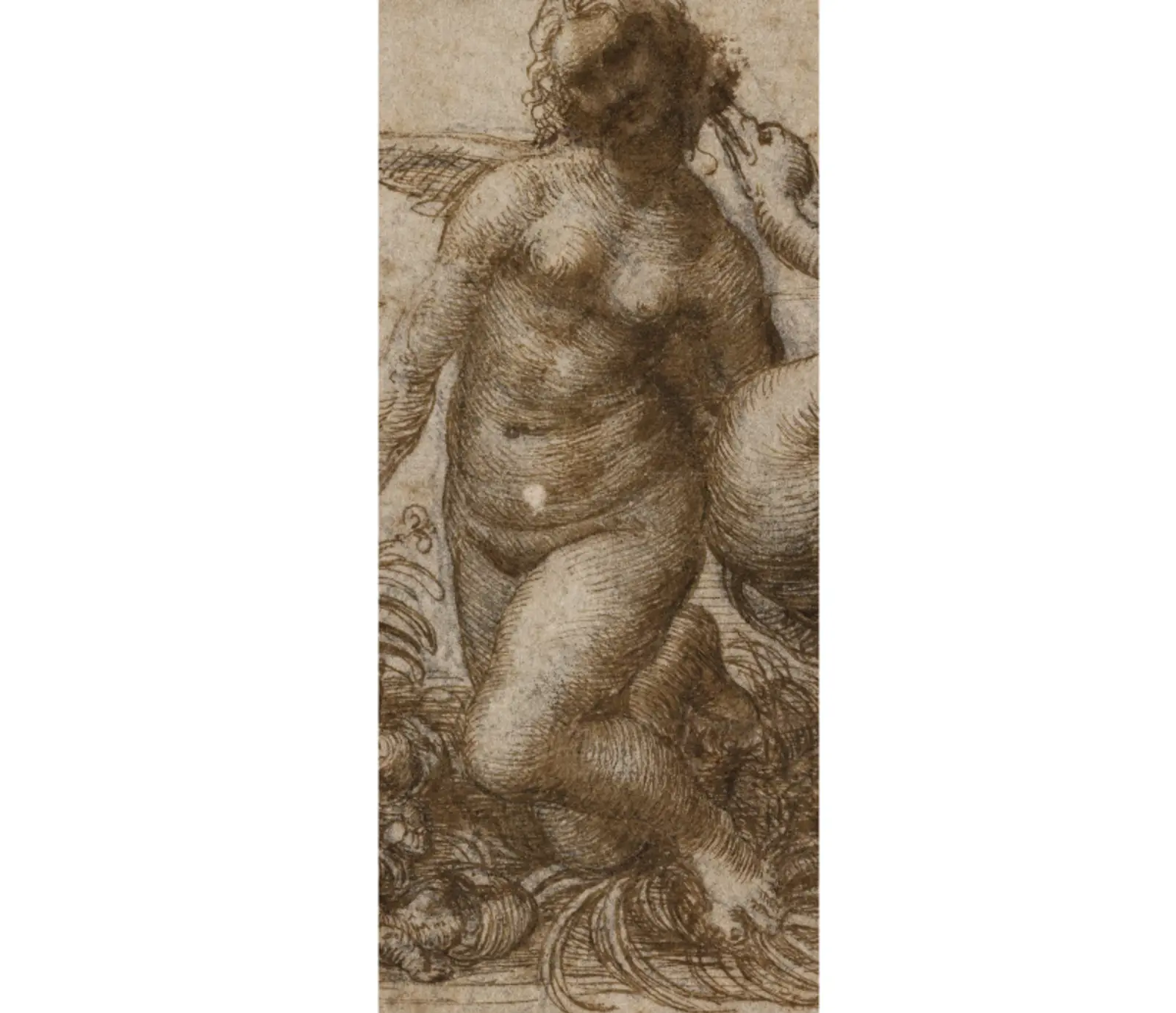
In some ways, Leonardo’s use of wash give this drawing a painterly quality. As a painter, Leonardo is known today for his use of chiaroscuro – the use of light and shade to suggest three-dimensional forms on a flat surface. Leonardo also pioneered a technique known as sfumato. He softened the passage from light to shade, blending without lines or borders (in Italian, sfumato means to vanish gradually like smoke). In your own time, look up some of Leonardo’s paintings and try to identify his application of sfumato.
Black chalk
There is also some black chalk visible on Leda and the Swan. What do you think he used this for?
Leonardo da Vinci is a good example of someone who experimented with many different materials and considered drawing, doodling and note-taking vital to the realisation of an idea or invention. For Leonardo, keeping a notebook helped sharpen the eye and focus the mind – and he encouraged other artists to do so too.
Something to think about
You may be wondering what happened to Leda’s face, which looks as if an ink stain has spread across it, darkening the surface. This may be due to the materials used. In Leonardo’s time, ink was made by mixing iron salts with tannic acid, extracted from gallnuts (a growth on a plant or tree such as the oak). In this drawing the iron gall ink used by Leonardo has cast a shadow over Leda’s face with the passing of time. It’s worth remembering that many historic drawings and paintings do not look the same to us today as they would have when they were first made.



